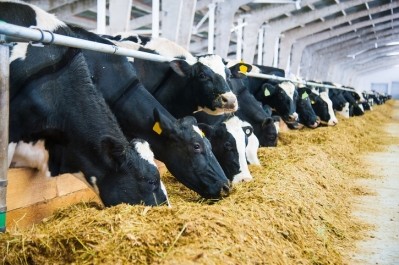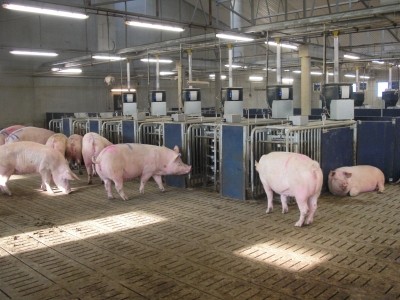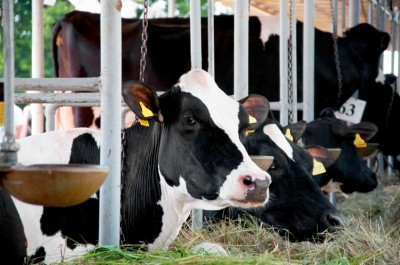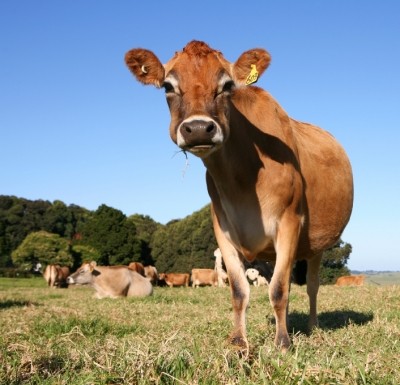Can crude glycerin, soybean oil improve the nutritional quality of beef?
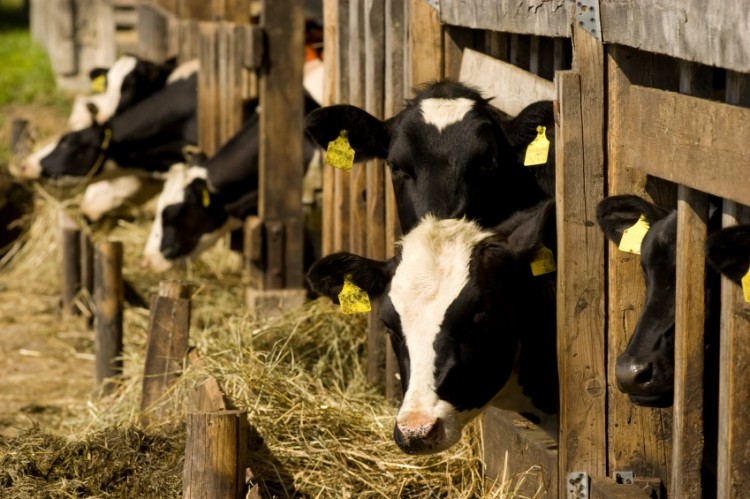
A team of researchers in Brazil examined the use of crude glycerin and soybean oil in cattle diets on ruminal bio-hydrogenation (BH) and digestibility of fatty acids (FA). The group published its research in the journal ofAnimal Feed Science and Technology.
“This study aimed to evaluate the effect of crude glycerin, soybean oil or its association addition into the experimental diets on ruminal BH rate, FA duodenal flow, FA intestinal digestibility, and major bacterial species that participate in ruminal BH in Nellore steers,” said the researchers.
They found that adding specific fats to cattle diets corresponded with a reduction of bio-hydrogenation of unsaturated fatty acids and improved their movement.
“The association of crude glycerin and soybean oil in the diet of Nellore steers restricted the BH of UFA, and increased the duodenal flow of these FA,” noted the authors. “Therefore, this association may be a nutritional strategy that would increase the deposition of healthy UFA in the meat.”
Why crude glycerin and soybean oil?
Saturated fatty acids (SFA) are considered a risk factor for cardiovascular disease in humans, said the researchers. The amount of SFA in beef products stems partially from ruminal bio-hydrogenation (BH) which saturates unsaturated fatty acids (UFA) and poly-unsaturated fatty acids (PUFA).
However, ruminal BH can be influenced by the makeup of cattle’s diets, they said.
Lipolysis is needed for ruminal BH and the bacterium Anaerovibrio lipolytica is thought to be the primary lipolytic microorganism in the rumen – especially in cattle getting a diet with large amounts of concentrates or high in triglycerides, said the research team.
In vitro studies have shown that adding glycerol to a diet can reduced lipolysis and limit the BH of ruminal UFA and PUFA, they said.
Crude glycerin, which contains glycerol, also may be used as an alternative ingredient to add energy in place of grain.
“Therefore, glycerin supplementation can be a strategy to increase the duodenal flow of UFA and PUFA, and consequently exert an immediate improvement on the fatty acid (FA) profile of meat and milk,” they said. “This would be based on the effect of glycerin on lipids, which are used only in low quantities in ruminant diets, since levels of lipids above 70 g/kg of dry matter (DM) may negatively affect DM intake, owing to the increase of the lag time of microorganisms and the antimicrobial effect exercised by lipids, largely by free PUFA.”
Reducing ruminal lipolysis and the release of UFA, there may be a corresponding reduction in bacteriostatic influence of UFA and PUFA, said the team. This might increase the movement of UFA and PUFA to the duodenum and not limit the ruminal microbial activity.
But the interaction between dietary glycerin and reduced ruminal lipolysis, is not completely understood, they said. “Castagnino et al. (2015) conducted an in vitro study to evaluate the association of glycerin with different vegetable oils, and observed that the addition of 150 g/kg (DM) of glycerin into the diet had no effect on the BH of UFA and PUFA; however, the proportion of A. lipolytica increased in animals fed diets containing glycerin,” they added.
The study hypothesis is that adding crude glycerin and soybean oil may reduce the ruminal BH, while improving the movement of duodenal UFA.
Methods and materials
In the feeding trial, eight cattle were given one of four diets in a rotation of four experimental periods, said the researchers.
Cattle received each of the trial diets for 21 days with 14 days of acclimation and seven days of sampling.
The tested diets were designed to have a roughage: concentrate ration of 30:70, where the roughage was provided by Tifton 85 hay and the concentrate was made up of corn, soybean meal and urea, they said. The feeds also included 100 g/kg DM of crude glycerin (CG); 60 g/kg DM of soybean oil (SO); or 100 g/kg DM of glycerin and 60 g/kg DM of soybean oil (CGSO).
Duodenal content was sampled on days 19 and 20 of each period and analyzed for long-chain fatty acid profile, DM and neutral detergent fiber (NDF), they said. Fecal matter was collected on days 16-20.
Feed, leftover feed and fecal matter were examined for DM content and feed was analyzed for ether extract (EE), nitrogen, gross energy, crude protein (CP), indigestible neutral detergent fiber (NDFi), said the researchers. All samples also were examined for fatty acid profile and rates of ruminal BH were calculated.
Additionally, the main bacterial species involved in the ruminal BH of unsaturated fatty acids were identified and counted using ruminal samples, they said.
Results
An interaction was found between dry matter intake (DMI), crude glycerin and soybean oil, the researchers said. Animals getting the diet with both additives or the control had a reduced DMI compared to those getting only glycerin, and those getting the soybean oil supplement had the lowest DMI.
“We confirmed the hypothesis that the association of soybean oil and crude glycerin in the diet may limit the ruminal BH and increase the flow of duodenal UFA,” they said.
Interplay between crude glycerin, soybean oil and the duodenal flow of DM meant DM was reduced with the SO diet, but there was increased duodenal flow of FA for the CGSO diet when compared to the control and CG group, they said. “The association of crude glycerin and soybean oil in the CGSO diet led to higher duodenal flow of MUFA, PUFA, UFA, and the FA C13:0, C14:0, C15:0, C17:0, C18:1 trans 9, C18:1 cis 9, C18:2 trans 12, 9, C18:3, C20:0 and C22:0, than did the other diets,” they added.
A reduced rate of ruminal BH of PUFA, UFA and linolenic acid was seen for cattle receiving the CGSO diet compared to the SO supplement, said the researchers.
The SO diet reduced populations of several bacteria, but the amount of Anaerovibrio lipolytica increased for the CG, CGSO and So diets, with the CG diet seeing the largest boost, they said. “Our results suggest that the higher concentration of A. lipolytica may not be necessarily linked to a higher lipolytic activity in the ruminal environment,” they added.
“Thus, it is plausible that the growth of this microorganism in the presence of glycerin is a key factor for the limiting effect on the ruminal lipolysis, and future studies are required to better understand this mechanism,” they said. “This limiting effect, together with the rate of passage of the diet, would allow a higher proportion of MUFA and PUFA leaving the rumen without undergoing BH, and may have an impact on the improvement of the fatty acid profile of meat and milk, without harming the microbial ruminal activity.”
The apparent intestinal digestibility of stearic acid, linoleic acid, total FA, all SFA and all UFA were not altered by the feed supplements, they said. Certain FA were better digested by cattle getting the SO feed, and there was a positive interaction between the CGSO diet and oleic acid digestibility compared to the CG diet.
Source: Animal Feed Science and Technology
Title: Diet containing glycerin and soybean oil can reduce ruminal bio-hydrogenation in Nellore steers
DOI: published online before print: 10.1016/j.anifeedsci.2017.01.021
Authors: Y Granja-Salcedo, V de Souza, A Dias, A Gomez-Insuasti, J Messana, T Berchielli
